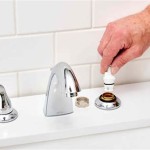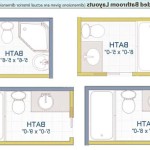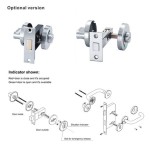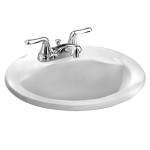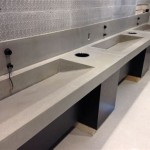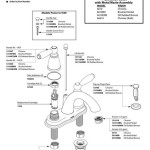The Implications of Running a Bathroom Fan Constantly
The decision to operate a bathroom exhaust fan continuously is a multifaceted issue involving potential benefits and drawbacks. While the primary intention of a bathroom fan is to remove moisture and odors, its prolonged use has significant ramifications for energy consumption, equipment lifespan, indoor air quality, and overall operating costs. This article explores these aspects in detail, providing a comprehensive understanding of the consequences associated with running a bathroom fan all the time.
Reduced Humidity and Mold Growth
The most commonly cited justification for continuous bathroom fan operation is the mitigation of humidity and prevention of mold growth. Bathrooms are, by their very nature, exposed to significant amounts of moisture from showers, baths, and handwashing. High humidity levels create a favorable environment for mold and mildew to thrive, particularly in areas with poor ventilation. Mold can cause a range of health problems, including allergic reactions, respiratory issues, and aggravated asthma symptoms. Furthermore, mold can damage building materials, leading to costly repairs. A consistently running fan can effectively extract moisture-laden air, preventing excessive condensation on surfaces and hindering the establishment and proliferation of mold colonies.
The effectiveness of continuous operation depends on several factors, including the fan's CFM (cubic feet per minute) rating, the size of the bathroom, and the external climate conditions. A fan with an inadequate CFM rating may not be sufficient to remove moisture effectively, even when running constantly. Similarly, in humid climates, the fan may draw in moist outdoor air, negating its intended purpose. In colder climates, continuous operation can lead to excessive heat loss, increasing heating bills and potentially causing pipes to freeze. Therefore, the decision to run a bathroom fan continuously must be carefully considered, taking into account these contextual factors. Proper insulation and weatherstripping can help to mitigate heat loss in colder climates.
Moreover, the control mechanism of the fan plays a crucial role. Basic on/off switches offer limited control over humidity levels. Humidity-sensing fans, which automatically adjust their speed based on the detected humidity, provide a more sophisticated and energy-efficient alternative. These fans can ramp up their speed during and after showers, and then reduce or shut off completely when the humidity returns to a normal level. This approach balances the need for moisture control with energy conservation. Timer-based fans are another option, allowing users to set a specific run time after each use. This can be effective in removing residual moisture without requiring continuous operation.
Increased Energy Consumption and Costs
The continuous operation of a bathroom fan translates to a significant increase in energy consumption. Even relatively low-wattage fans consume a considerable amount of electricity when running 24/7. Over the course of a month or a year, this can translate into substantial increases in electricity bills. The exact amount of energy consumed depends on the fan's wattage and the local electricity rates. To illustrate, a 50-watt fan running continuously would consume 1.2 kilowatt-hours (kWh) per day, or approximately 36 kWh per month. At an average electricity rate of $0.15 per kWh, this would add roughly $5.40 to the monthly electricity bill. While this may seem insignificant on its own, the cumulative cost over a year, and multiplied across multiple bathrooms in a building, can become substantial.
Furthermore, the energy consumption of a bathroom fan is not limited to the electricity required to run the motor. In colder climates, the fan can contribute to heat loss, forcing the heating system to work harder to maintain a comfortable temperature. This indirect energy consumption can further increase heating bills. The impact of heat loss is amplified by the fact that bathroom fans often exhaust air to the outside, creating a pathway for warm air to escape. The extent of heat loss depends on the fan's airflow rate and the temperature difference between the inside and outside. Properly sealing around the fan housing and ductwork can help to minimize air leakage and reduce heat loss.
To mitigate the energy costs associated with bathroom fan operation, energy-efficient fans should be considered. Look for fans with the ENERGY STAR label, which indicates that they meet stringent energy efficiency standards. ENERGY STAR certified fans typically use less energy and operate more quietly than standard models. In addition, consider using a timer or humidity sensor to automatically control the fan's operation. This allows the fan to run only when needed, minimizing energy consumption without compromising moisture control. Incorporating smart home technology can also provide advanced control and monitoring capabilities, allowing users to track energy usage and optimize fan settings.
Potential for Reduced Indoor Air Quality
While bathroom fans are designed to improve indoor air quality by removing moisture and odors, continuous operation can paradoxically degrade indoor air quality in certain circumstances. If the fan is not properly maintained or if the ductwork is not sealed correctly, it can draw air from undesirable sources, such as attics or crawl spaces. These areas often contain dust, insulation fibers, mold spores, and other contaminants that can be introduced into the bathroom and the rest of the house. The constant influx of these contaminants can negatively impact indoor air quality and potentially exacerbate respiratory problems.
Furthermore, continuous fan operation can create negative pressure within the house, drawing air in through cracks and gaps in the building envelope. This can bring in outdoor pollutants, such as pollen, dust, and vehicle exhaust, which can further degrade indoor air quality. In homes with combustion appliances, such as furnaces and water heaters, negative pressure can also cause backdrafting, where exhaust gases are drawn back into the house instead of being vented to the outside. Backdrafting can lead to carbon monoxide poisoning, a potentially fatal condition. It is critical that homes with combustion appliances have adequate ventilation to prevent negative pressure and ensure safe operation.
To prevent negative impacts on indoor air quality, bathroom fans should be regularly maintained and inspected. Clean the fan blades and housing regularly to remove dust and debris. Ensure that the ductwork is properly sealed to prevent air from being drawn in from undesirable sources. Consider installing a backdraft damper to prevent air from flowing back into the bathroom when the fan is not running. If you suspect that your bathroom fan is negatively impacting indoor air quality, consult with a qualified HVAC technician. They can assess your ventilation system and recommend solutions to improve indoor air quality, such as installing a whole-house ventilation system or sealing air leaks in the building envelope.
Beyond these primary considerations, other factors may influence the decision to run a bathroom fan constantly. Noise levels can be a concern, as some fans produce considerable noise during operation. This can be particularly disruptive in bedrooms located near bathrooms. The lifespan of the fan motor is also a factor, as continuous operation can accelerate wear and tear, leading to premature failure. A higher-quality fan with a durable motor is more likely to withstand continuous use. Ultimately, the decision to run a bathroom fan constantly requires a careful balancing of the potential benefits and drawbacks, taking into account individual circumstances and priorities.

House Ventilation 101 A Homeowner S Guide To Continuous Running Exhaust Fans Center For Energy And Environment

How Long Should You Run Your Bathroom Fan

Experts Say You Should Turn Off Your Bathroom Fan Before A Vacation

Exhaust Fan Runs Continuously How To Rewire

Is Your Bathroom Exhaust Fan Powerful Enough Haas And Sons Electric

Does Your Bathroom Need An Exhaust Fan Mr Rooter

Is My Bathroom Fan Working Properly Kobalt Systems

Bathroom Exhaust Fan Fire Hazards Countryside Protection District

Why Is My Bathroom Exhaust Fan Always On Even When The Switch Off

5 Reasons Bath Fans Have Such Poor Air Flow Energy Vanguard
Related Posts
